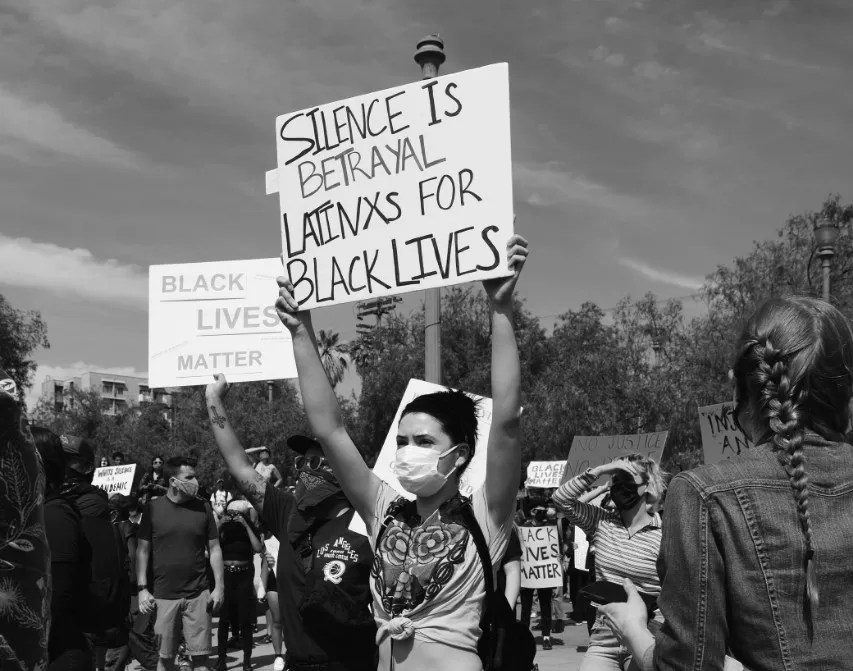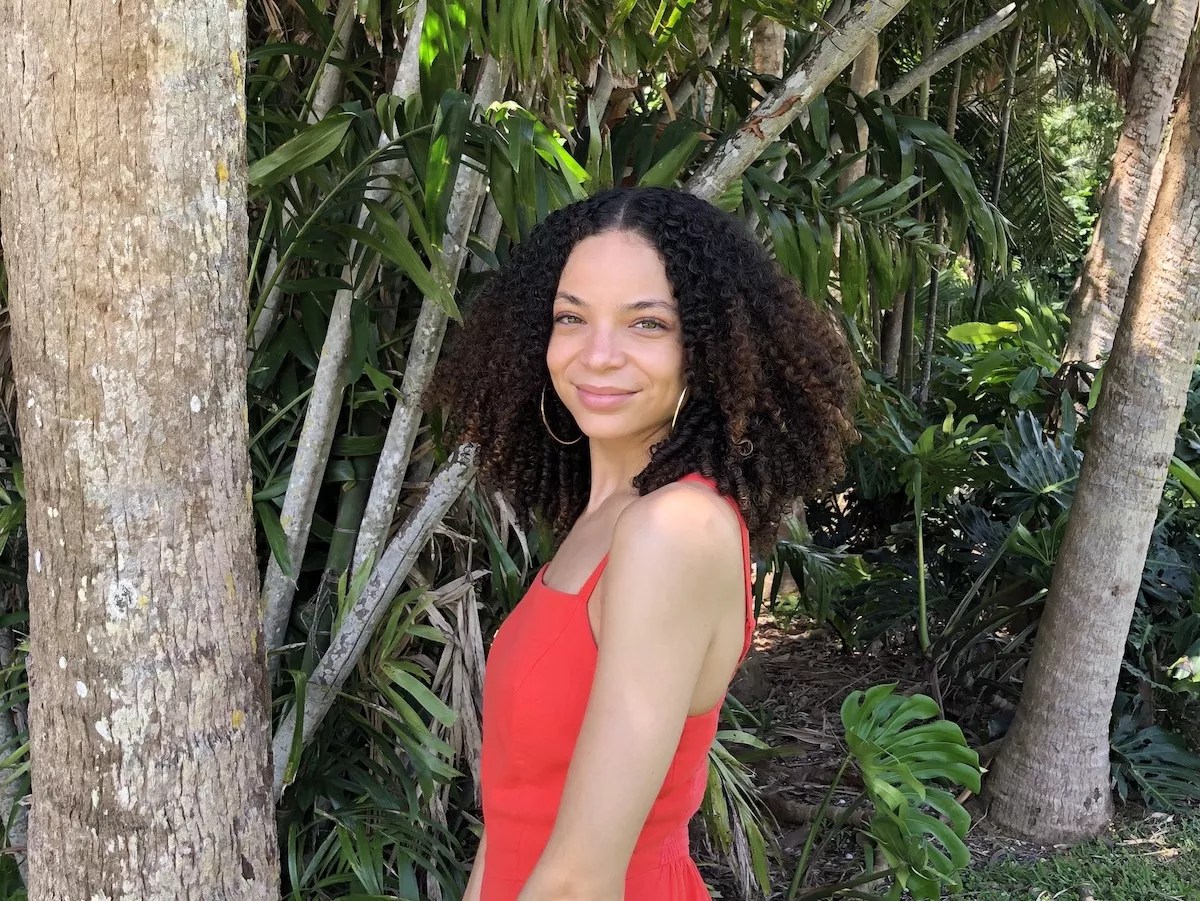
Photo by Mike Von/Unsplash

Audio By Carbonatix
The hashtags #BecauseMiami and #OnlyInMiami are ubiquitous on social media. Usually, they’re used to highlight something so outrageous that it could only happen in South Florida. The object of scorn, derision, or amusement is so quintessentially Miami that those hashtags must follow.
But lately they’ve been used to spotlight some of Miami’s more malignant traits: racism and colorism.
Last month, a group called Cubans4Trump held a counterprotest to Black Lives Matter demonstrations in Miami Lakes. A majority Republican, overwhelmingly white Hispanic town, the northwest Miami-Dade suburb is home to some of Trump’s most ardent supporters. Protest organizer Melanie Martinez addressed the crowd, blaming those who have been subjected to police brutality.
“At the end of the day, it comes down to this: Do what is right, respect authority, stay out of trouble, don’t commit crimes, never resist the police, and you will be OK,” Martinez said to applause and cheers.
In South Florida in general, non-Black Latinos often have a blind spot when it comes to recognizing themselves as a minority in the United States. Miami-Dade County is 69.4 percent Hispanic, forming a protective demographic bubble around a populace that has grown accustomed to viewing itself as the dominant culture.
But as one Twitter user phrased it, drive north of Miami – out of the bubble brimming with unlimited croquetas, salsa, and Spanish-language signage – and you might encounter odd stares and blunt reminders to “speak English” or “go back to your country.”
The reality is that non-Black Latinos, being minorities themselves, are subject to discrimination and prejudice as well. It may not be as apparent while living comfortably in the 305 – but it does happen.
Twenty-two-year-old Haitian-Dominican Samantha Espinal often heard colorist remarks masked as compliments growing up. Although both of her parents are darker-skinned, her looser curls and a lighter complexion meant she could often pass for white.
One instance Espinal remembers vividly came when she was a child on a playdate with a white classmate. Her classmate’s mother asked Espinal’s mother where she was from.

Samantha Espinal was often told she had “good hair” or “nice features” because of her lighter skin.
Photo courtesy of Samantha Espinal
“My mother told her that she is Haitian and my father is Dominican,” Espinal says. “The mother of the girl told my mother that it was OK because I can pass for white – as if this were a good thing or something my mother should be happy about.”
Growing up, Espinal was often told she had “good hair” or “nice features” because of her lighter skin.
“The comments were said in a way that praised me for being fair,” Espinal adds. “I shouldn’t be praised for being pale, and my mother shouldn’t be told that she should be grateful that I don’t look like her… These comments were said in a way that was meant to uplift me while tearing down those with darker skin. It hurts me to think that people not only have these beliefs but that they are so comfortable with them that they would say them so casually.”
This preference for lighter skin tones is also prevalent in the Hispanic media, where white or light-skinned Latinos are often overrepresented. This mostly leaves out Afro-Latinos, who make up 25 percent of the U.S. Latino population, according to Pew Research Center.
Singer and reality TV star Amara La Negra appeared on the iconic variety show Sábado Gigante for six years during her childhood, only to feel excluded and awkward as the only Afro-Latina on the show. In a 2018 interview with National Public Radio, she described how producers would place in the back of the cast or bury her in the middle, leaving her feeling “like a bug in the middle of a cup of milk.” This type of treatment can also be seen in telenovelas, where casts are mainly white Hispanic, only employing Afro-Latinos as side characters.
Despite instances like these, non-Black Latinos continue to believe that as a minority themselves, they’re incapable of racism. Arlene Davila, professor of anthropology, social and cultural analysis at New York University, expressed more or less the same sentiment to NPR, explaining that these Latinos will argue that “you can’t apply the same standards of racism because ‘we have our humor and we are not racists, because we are Latinos, and we can get away with that without getting regulated.'”
Still, the Hispanic media exhibits a clear preference for non-Black Latinos, furthering the narrative of colorism. These colorist norms can be damaging to Afro-Latino children, especially when they also often hear racist language being used by family and friends.

Carmen Brana (left) says anti-Black racism within the Latino community is influence by the colonial past of many countries; Najla Beard says she only recently learned to love her blackness over time.
Photo courtesy of Carmen Brana and Najla Beard
Najla Beard, 23, says she only learned to love her blackness over time. She grew up in a Dominican household where her family often projected their preference for lighter skin onto her.
“When I was about six years old, my aunt was checking on me in the shower and she said, ‘Scrub your knees and your elbows – they are dark, scrub the dirt off,'” Beard remembers. “I was in that shower scrubbing and scrubbing and wondering why it wouldn’t come off. It took me years to realize that, ‘Hello, you’re Black, you’re going to have darker areas on your body.’ But my white-passing aunt thought otherwise.”
Beard says she didn’t know she had naturally curly hair until she was 17. Her family began perming her hair at seven because she had pelo malo (Spanish for “bad hair”). After realizing that her hair had been permed throughout her childhood, she decided to embrace her natural texture.
“Pelo malo” isn’t the only colorist Spanish phrase, either – there are plenty of others. “Mejorar la raza” or “arregla la raza” (Spanish for “improve/fix the race”) is a common admonishment as a way to encourage Latino kids to marry a light-skinned or white person so as to have “better looking” kids. In non-Black Latino families, parents often dissuade their daughters from dating Black men. The stereotype is so ingrained that it was the basis of the plot for the 2010 rom-com Our Family Wedding. In one scene, America Ferrera’s abuela meets her Black fiancé for the first time, and upon seeing him, she passes out, seemingly out of shock. When he reaches out to help her up, she exclaims, “No me toques” (“Don’t touch me”).
Carmen Brana, 66, a Puerto Rican who has witnessed some instances of colorism in Puerto Rico, points out that to get to the roots of colorism and anti-Black racism within Latino communities, it’s essential to note the strong influence of colonialism and slavery on many countries.
“There was slavery in Puerto Rico,” Brana explains. “And they used to take the slaves and put them in the dungeons beneath Castillo San Felipe del Morro, and the slaves would escape and go through the beach to a place called Loíza Aldea. This town is still mostly Black to this day, so you can see the prejudice there [in the form of segregation].”
Loíza Aldea, a barrio within the township of Loíza, was “founded by formerly enslaved Africans” and has one of the highest concentrations of Afro-Puerto Ricans on the island today. Sixty-five percent of Loíza’s residents identified as Black in the 2010 Census, but as some demographers are noting, the actual number is much higher. Despite having a large population of Afro-Latinos, many Puerto Ricans don’t identify as Black, instead choosing white on the U.S. Census and other surveys.
“There are people that don’t want to use the word black because they think it’s an insult, and there is still that idea that we need to ‘better the race,'” Bárbara I. Abadía-Rexach, a sociology professor at the University of Puerto Rico, recently told the New York Times.
Regardless of whether Afro-Latinos choose to identify themselves as Black, they are continuously disadvantaged systemically. According to a 2014 Pew Research survey, they’re less likely to have a college education and typically have lower family incomes. The study found that about 60 percent of Afro-Latinos reported family incomes below $30,000.
Of course, plenty of racism and colorism intrudes during everyday life. From unintentional microaggressions to unchecked biases, Espinal hopes that Latinos educate themselves and unlearn these behaviors.
“First, look at yourself and see if you contribute to and carry on these colorist and racist ideas,” Espinal suggests. “We need to learn how to unlearn harmful behaviors and notions. Second, acknowledge injustices and speak on them. Don’t be complacent nor silent because it’s hurtful and oppressive. Third, acknowledge your privilege. Being a minority does not make you exempt from perpetuating harmful ideologies.”
For Espinal, being an ally also requires empathy.
“I think we can all be better allies by simply listening,” she says.